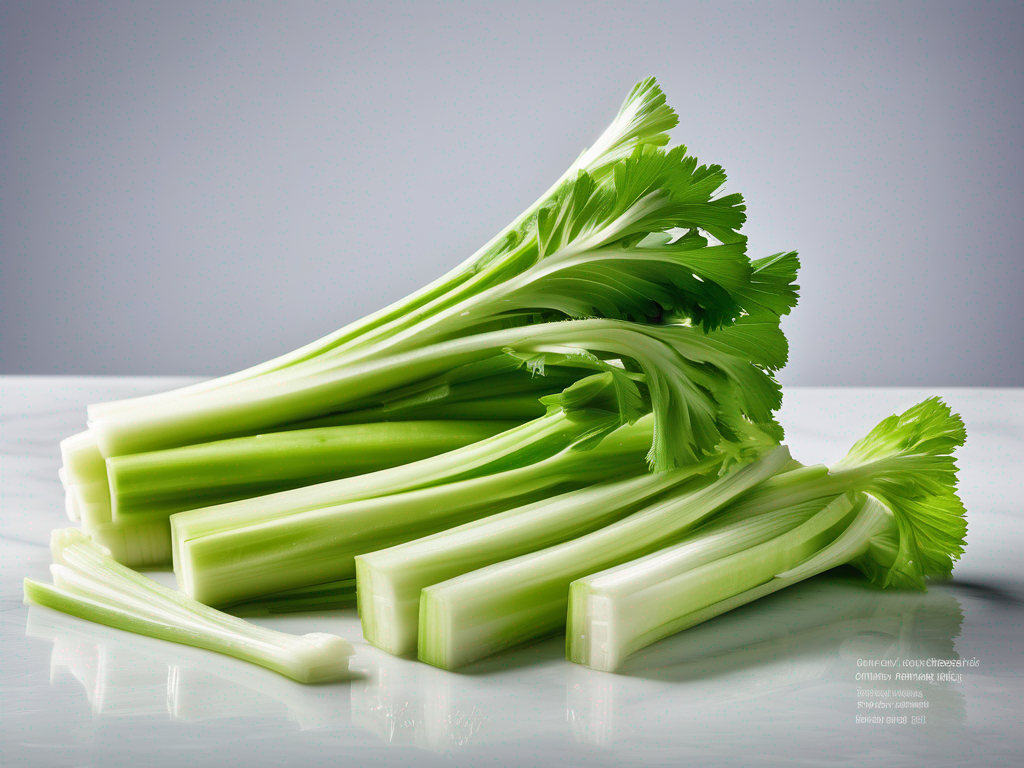
When to Toss Celery Stalks that Have Gone Bad
Get Your Free Food Safety Cheat Sheet
30 most common foods with instant answers. Print it and stick it on your fridge—completely free!
When to Toss Celery Stalks that Have Gone Bad
Celery is a versatile and healthy vegetable that adds crunch and flavor to many dishes. However, like all perishable foods, celery can go bad if not stored properly. In this blog post, we will discuss when to toss celery stalks that have gone bad, how to identify signs of spoilage, and essential tips for proper celery storage to prevent waste and ensure food safety. (Celery stalks)
Signs of Spoiled Celery Stalks
Celery stalks are prone to spoilage due to their high water content and delicate nature. It is crucial to inspect your celery before consuming it to avoid foodborne illness. Here are the common signs that your celery stalks have gone bad:
Visual Changes
- Discoloration: Look for any dark or moldy spots on the celery stalks.
- Slimy Texture: If the celery feels slimy or sticky to the touch, it is a sign of spoilage.
- Wilted Appearance: Celery stalks that are limp or have shriveled leaves are no longer fresh.
Smell
- Unpleasant Odor: Spoiled celery may emit a foul or fermented smell, indicating bacterial growth.
Taste
- Bitter Flavor: If the celery tastes bitter or off, it is best to discard it.
Proper Storage of Celery Stalks
To extend the shelf life of celery and prevent it from spoiling prematurely, follow these essential storage tips:
Refrigeration
- Wrap in Aluminum Foil: Enclose the celery stalks in aluminum foil to maintain freshness and crispness.
- Store in the Crisper Drawer: Place the wrapped celery in the refrigerator's crisper drawer, which provides optimal humidity levels.
- Avoid Freezing: While you can freeze celery for use in soups or stocks, freezing can change the texture of raw celery, making it less ideal for fresh consumption.
Cleaning and Preparation
- Wash Before Storing: Rinse the celery stalks under cold water and pat them dry before storing to remove any dirt or debris.
- Trim the Ends: Cut off the ends of the celery stalks before storing to maintain freshness.
Container Options
- Use a Plastic Bag: Store celery in a perforated plastic bag to allow for airflow while retaining moisture.
- Glass Containers: Alternatively, place celery stalks in a glass container with water to keep them hydrated.
When to Toss Celery Stalks
Despite your best efforts to store celery properly, there may be times when you need to discard celery stalks that have gone bad. Here are some scenarios when it is best to toss celery:
Expiry Date
- Expired Shelf Life: Check the expiration date on the packaging or use-by date to ensure the celery is still safe to consume.
Spoilage Signs
- Visible Mold: If you notice any mold growth on the celery stalks, discard them immediately.
- Unpleasant Odor: Trust your sense of smell; if the celery emits a pungent or off-putting odor, it is a clear sign of spoilage.
- Slimy Texture: Touch the celery stalks; if they feel slimy or mushy, they are no longer fresh.
Safety Precautions
- Foodborne Illness: Consuming spoiled celery can lead to food poisoning, so it is crucial to prioritize food safety and discard any questionable produce.
Conclusion
In conclusion, knowing when to toss celery stalks that have gone bad is essential for maintaining food safety and preventing waste. By being vigilant for signs of spoilage, following proper storage practices, and understanding when it's time to discard celery, you can enjoy fresh and delicious celery in your meals. Remember, when in doubt, it's always better to err on the side of caution and dispose of any celery that shows signs of spoilage. Your health and well-being are worth the extra effort in ensuring the freshness of your produce.
For more information on [celery stalks](/food/celery stalks) and other food safety tips, stay tuned for our upcoming blog posts. (Celery stalks)
Related Posts
Here are some other articles you might find helpful:
Authoritative Food Safety References
These agencies and university labs inform every tip and health precaution we publish.
USDA FoodKeeper – Cold Storage Guidelines
Official refrigerator, freezer, and pantry timelines maintained by the U.S. Department of Agriculture.
Visit USDA FoodKeeperFDA Produce Safety Rule & Grower Guidance
Field-to-fridge handling practices that prevent contamination of fruits, vegetables, and leafy greens.
Visit FDA Produce SafetyCDC Foodborne Illness Prevention Hub
Surveillance-backed guidance on pathogens, symptoms, and steps to reduce foodborne illness risk.
Visit CDC Food SafetyUC Davis Postharvest Technology Center
University research detailing optimal storage atmospheres for produce after harvest.
Visit UC Davis PostharvestPenn State Extension – Home Food Preservation & Safety
Peer-reviewed extension bulletins on safe canning, chilling, and reheating practices.
Visit Penn State ExtensionGet Your Free Food Safety Cheat Sheet
30 most common foods with instant answers. Print it and stick it on your fridge—completely free! Want more? Upgrade to the complete guide with 70+ foods.
Scan your food directly and get instant safety info using our AI-powered camera feature.